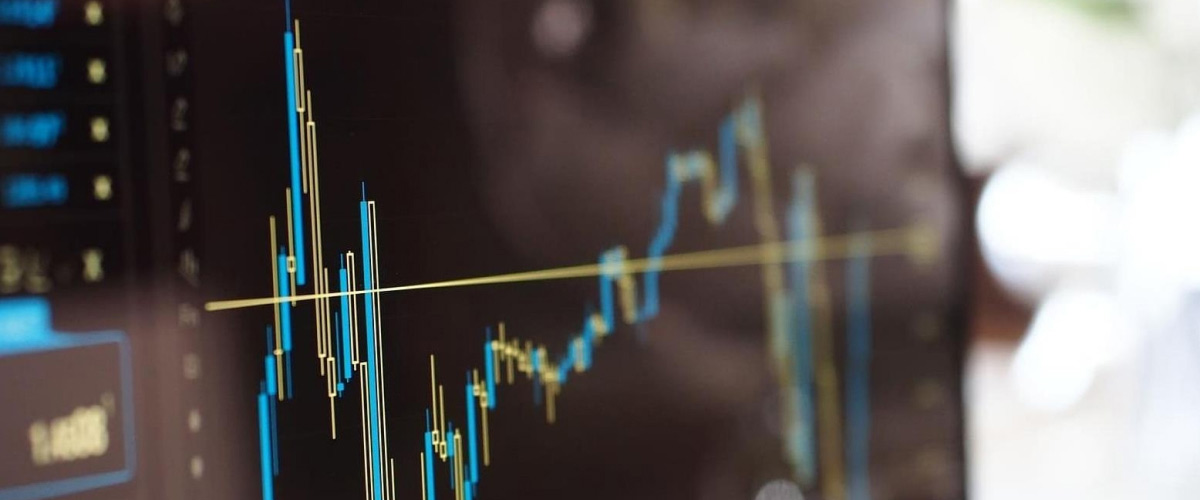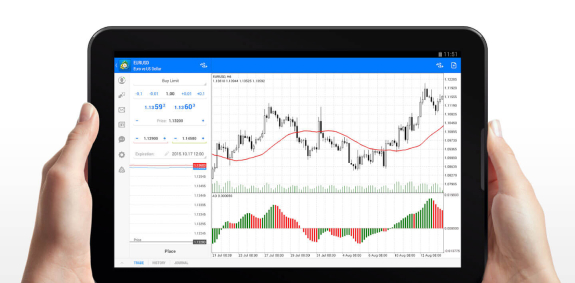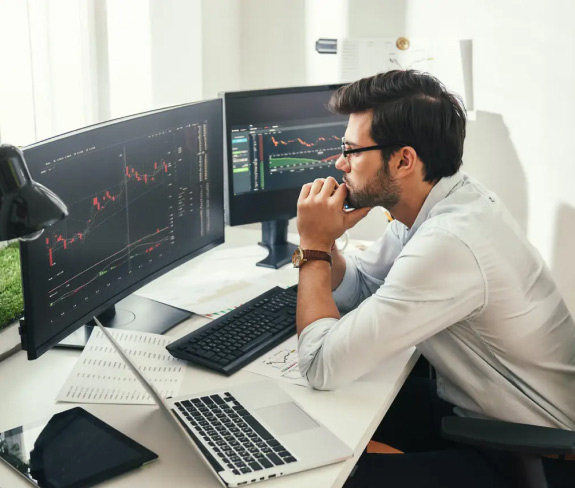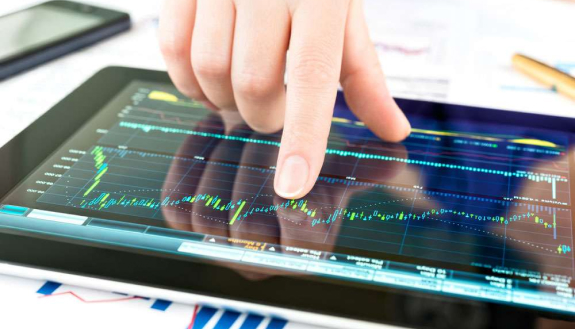How to Choose a Forex Broker
The Forex market is an extremely competitive field. Not only is it overwhelmingly complicated, but while trading, you are permanently exposed to some percentage of risk. Thus, it’s crucial to find that one broker you can trust and rely on for a fruitful partnership. To do so, it’s important to stick to some determined parameters, which are going to be fully revealed in this article.

Determine Your Needs
The first question you ask is why you need Forex trading. Are you looking for investment opportunities, do you wish to control the currency exchange, or is it financial independence you’re seeking first? Notwithstanding the response, choosing a Forex broker necessitates first determining what kind of investor you are as well as your objectives in currency trading. It’s also crucial to get acquainted with the basics of Forex and educate yourself on finances to make a more precise choice.
Day-Trading Or Scalping
There are several main trading styles used by traders worldwide. All of them vary in length (from instant to 5 or more years), as well as individual properties and regulations. Two of such styles are day-trading and scalping.
Scalping is a short timeframe trading style – usually, the deal is done in between several seconds to a couple of minutes. As the name suggests, a scalping trader makes their profit on small price changes and makes a fast profit off reselling. Due to its specifics, scalping requires a lot of stamina, patience, and attention, and will only be a good option for those who make their full-time profit with Forex.
Day-trading, on the other hand, is a more meaningful style, which usually gives a trader 5 to 10 closed transactions daily. The approach requires thoughtful analysis and is generally more predictable than scalping, which makes it a good option for part-time traders. The day trader acts within one trading session, i.e. inside one news background. The market may change the following day, and the risk management system does not allow the day trader to carry over positions up to the next day. One big advantage of this method is thoroughly knowing your situation by the end of the day, understanding whether you are up or down. A drawback, though, lies within details, and you may just not notice some bigger and more profitable stock while paying attention to one of your choices.
The Minimum Deposit
When you start trading at Forex, the first thing you should learn is to be okay with losses. Normally, it is something any entrepreneur or business person should learn, but over at the stock exchange, this is crucial. The generally recommended sum for the first and smallest deposit is to put in $1,000 – this figure should suffice to test different trading styles and opportunities and at the same time is not that big to lose. To wrap up, the minimum deposit should be the figure which if lost won’t upset you that much.
Is There A Demo Account?

There is such a thing, yes. Most Forex brokers have demo accounts that allow prospective clients to test drive the standalone, web-based, and smartphone platforms when exchanging Forex pairs with virtual currency. This app shows the same quotations, maps, and watchlists as the actual machine, so, in terms of checking on the quality of the broker’s bid/ask pricing, it’s a priceless resource. In case the broker doesn’t offer a demo account, it’s a reason to be suspicious as it might be using an inferior or outdated platform.
When you compare any of these accounts to real-time quotes from a broad financial platform, you can easily see the Forex traders are giving the best bid and ask rates in normal market conditions. Take a second glance, if possible, right after a Federal Reserve rate decision or another market-moving occurrence to see how currency pairs respond in extremely unpredictable environments.
What Is The Commission For Transactions?
It is common among Forex brokers to have a non-fixed spread rather than a fixed one. It can increase depending on the market situation and time of day. But usually, they have narrow spreads, so they also charge a small commission for each trade based on its volume which compensates for small spreads.
There are also types of accounts that use a fixed spread (probably not even all brokers already have them), but those account types usually have much higher spreads than those with floating ones.
How Fast And Easy Is It To Deposit And Withdraw?
Usually, the Forex trading platforms allow conducting these financial operations in the most common ways. You can invest funds in your account using bank transfers, various e-wallets, credit or debit cards, and even cryptocurrency. There is no commission and the funds are credited instantly. Though, currencies may vary on the particular payment method and\or the platform. It’s the withdrawals that meet commission rates, which may also vary. Also, they have different processing time, which is 1 to 4 banking days.
What Trading Terminals Are Used?
Trading terminal is software you’ll have to download to make transactions within Forex. A right trading terminal is another important criterion that will help you pick a good broker. Such a terminal mustn’t be outdated, as outmoded systems put you at risk of competitive disadvantage. The ones most commonly used today are MetaTrader 4 and MetaTrader 5, CTrader, NinjaTrader, and others.
Which Types Of Orders Does A Broker Have?
Orders in Forex mean a particular type of financial operation which a broker has to execute. For example, the mobile trading terminal MetaTrader 5 allows preparing and issuing orders to a broker for trading operations. There are several main operations.
Market order
A market order is a buy or a sell order that would be filled at existing market rates. Market orders are executed as long as there are ready sellers and buyers. Where the certainty of execution is more important than the price of execution, market orders are used. A buy order is opened on a currency pair at the latest “Ask” price and can be closed at the “Bid” price. Likewise, the sell order can be opened at the “Bid” price and closed at the “Ask” price.
Stop-loss orders
Stop-loss orders are designed to reduce your losses by immediately closing the transaction if the price increases (for short positions) or declines (for long positions) above a certain point set by you. These orders should be thought of as an insurance program in case a transaction doesn't work out. Let's presume you placed a market buy order for many lots of EURUSD at 1.2600 and set the stop-loss levels at 1.2500. The price drops below 1.2500, but your stop-loss order kicks in and limits the loss.
Take profit orders
Take profit orders are the opposite of the stop-loss: they are a form of limit orders that determine the precise price at which an open location can be closed for a profit. The take profit order is not filled if the price of the currency pair does not meet the specified price.
limit order
A limit order is a trade request for buying or selling a currency pair at a particular price (higher or lower than the current price). A buy limit order is a request to buy a currency pair at a lower price than the current one. Usually, they are placed with an expectation that the price will drop to a certain level and then will start to grow again. A sell limit order is the opposite of a buy limit order. This means that the sell limit order is a request to sell a currency pair at a higher price than the current one. Usually, they are placed with an expectation that the price will grow to a certain level, and then it'll start to fall back. Here is an example of a buy limit order. Let's say that some investor needs to buy a EURUSD currency pair when the price will reach 1.2000, but at the current moment the price is 1.2050 so all the investor needs to do is to set the buy limit order at 1.2000 so that when the price reaches 1.2000 the order would be executed automatically executed.
Buy and Sell Stop orders
Buy and Sell Stop orders differ from limit orders. They are arranged the other way around. A Buy stop order is a trade request to buy a currency pair at a certain price level. When the price reaches this level, the Buy Stop order becomes a market “Buy” order. The buy stop can only be placed above the market price as an opposite to the buy limit order which can only be placed below the market price. This also works in reverse with the Sell Stop order. A Sell Stop order is a trade request to sell a currency pair at a certain price level. When the price reaches this level, the Sell Stop order becomes a market “Sell” order. The sell stop can only be placed below the market price as an opposite to the sell limit order which can only be placed above the market price.
Is Margin Trading Available?

Margin trading is the type of trading that uses the broker's funds secured by a pre-agreed amount (margin). Thus, a trader can trade in financial markets and, in particular, Forex.
The collateral amount allows the investor to obtain a loan for conducting trade transactions. When buying and selling assets, traders do not set themselves the goal of buying real currency. They make money only on the exchange rate difference. This is the basic principle of margin trading.
An important element of margin trading is the leverage that the broker provides to their client. Thanks to such leverage, the investor has the opportunity to increase their trading capital tens of thousands of times. To calculate the size of the margin, the trader must divide the volume of the position they are opening by the leverage.
The leverage is usually bigger for the small trades and, in turn, smaller for the big trades. It is not recommended for a newbie trader to go breaking bad and start with a 1:200 leverage immediately. It’s better to start with smaller loans, which will gradually increase your capital and won’t let you lose the last nickel.
But, generally speaking, the more leverage broker is willing to give you is the better. Take it as a reserve you won’t necessarily use – you still should have one.
Bonuses And Discounts
Numerous trading platforms provide a range of promotions for traders in order to increase their traffic. Among the offers, there are cashback, commission-free deposits, stop-out insurance, and a particular margin percentage. Regardless of the offer, such additional benefits will only be truly helpful if the platform itself is proven fair and is reviewed as such. To make sure you are picking the right broker, don’t miss out on reading the reviews, take the offered conditions into account, and be selective when it comes to making a final choice.
Are There Premium Bonuses?
Apart from standard bonus proposals, the brokers also offer especially good deals for VIP traders. A minimum deposit condition that seems to be very expensive – normally starting with $10,000 – is common. A premium or VIP profile is typically reserved for serious Forex traders and provides advantages such as access to a wide variety of training content, increased security, spreads, and pips, direct access to the broker's trading desk, assured tighter spread, personal account manager, real-time financial news to help your Forex decisions, and more. Still, the brokers may give less leverage as they carry a risk of not being able to cover it.
Is The Broker A High-Security Solution?
There are pros and cons to every Forex broker. Control, the degree of protection offered by these firms, and transaction costs are also critical factors to consider. Protection capabilities vary from one broker to the next. Some brokers have security mechanisms built-in, such as two-step authentication, to keep accounts secure from hackers.
A significant number of Forex brokers are regulated and it’s possible to check the certification via the regulating organs. The National Futures Association (NFA) and the Commodity Futures Trading Commission (CFTC) control Forex traders in the United States, and France, Germany, Switzerland, Austria, Canada, and the United Kingdom do as well. However, not all brokers are limited, and traders can avoid uncontrolled companies.
Test Your Broker With The Minimum Deposit

The first rule of Forex is to invest strictly as much money as you can afford to lose. Forex is a sphere of high risk, from which you may come out either with big profits or big losses. So to save yourself from unnecessary losses and practice Forex trade and master the technique, you should stick to a demo account for some time – that is, of course, if you are only a beginner.
As stated earlier in the article, be willing to let go of your first Forex investment completely when you make it. Brokers’ platforms vary in terms of mandatory account minimums and transaction fees. You should allocate a budget for your investing life before getting on a trading site: determine how much money you want to spend, how much you're able to pay in taxes, and what your objectives are. There is a number of considerations to think through when selecting the best forum for your needs. Before getting involved, make sure to weigh up as many aspects as possible.
Customer Support
Since brokers aren't flawless, you can choose one with whom you can quickly connect if problems come up. Brokers’ ability to deal with account or technical service problems is almost as critical as their ability to execute trades. Though Forex brokers can be courteous and supportive during the account opening process, some of them may have poor “after-sales” service. Pay attention to the client care work speed and whether the agents are savvy and educated.
Read The Reviews
What will help you choose the right broker is good analytics. Feel free to educate yourself on the matter: make a list of the trusted resources (you can start with Investopedia, Babypips, MarketWatch, and so on) and spend a spare hour digging through the independent reviews. Trading at Forex is an occupation risky enough by itself, and what you absolutely won’t need is an additional nuisance.
Does The Broker Offer Educational Content?

A reputable broker will be interested in their clients to make wiser decisions and be generally impeccably educated on the matter. Thus, if you are using a trustworthy platform, you can be sure to find a section dedicated to schooling, which includes webinars and tutorials on the dynamics of Forex markets, common currency pairs, and market factors that cause purchasing or selling pressure. These manuals should provide specific details about how central banks influence currency markets as they increase or lower interest rates, as well as how traders should plan for these occasional events.
That’s not it. The educational segment may include the trading channels, currency pairs, and market order styles, generally speaking, even the simplest issues present in traders’ routine. Look for videos, guides, or other tutorials that demonstrate how to create personalized watchlists, set up technical charts, and view simple quote screens. These tools will also teach you how to get news and research from platforms directly, so you don't have to scour the Internet for content.
What Are The Instruments For Market Analysis
The first such instrument should be provided at the mentioned educational section, namely a list of top currency pairs, which might offer the best short-term benefit prospects at the moment. This segment may provide real-time news and online webinars, as well as complimentary third-party analysis and expert insight. Look for reporting that covers the whole world rather than only local economies, as well as a regular economic calendar that shows all market-moving economic releases from all over the world.
Conclusion
Choosing a broker for Forex trade may be a challenging task and in its essence is a little more complicated than it may seem at first, but generally stands up to the normal difficulty of picking a worthy business partner. When doing the research, pay attention to independent reviews, promotion programs, and educational content. From your side, think through the type of trading you’d like to carry out and give a demo account a serious try. Only after that, you should count the approximate sum for the first investment – having done your homework will positively affect your final choice.